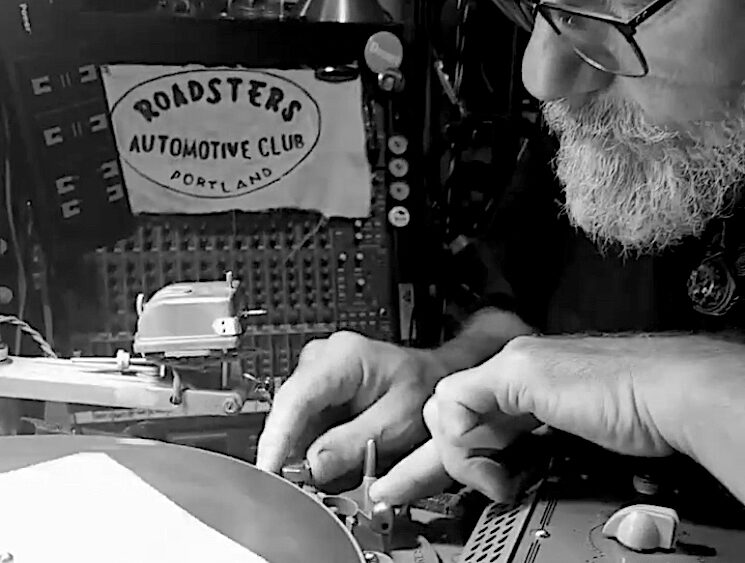A lathe-cut record is small-batch art. It was made by hand, one-at-a-time, in real time, on a polycarbonate (plexiglass) medium, using machines built in the 1930s & ’40s. The embossing process presses the sound into the medium with a stylus made of tungsten or sapphire as the music is playing.
Lathe-cut machines were the sound recorders of their era; as recording tape, compact discs, and digital devices hadn’t been invented yet. They were mainly used to record live performances directly to disc and produce broadcast transcription discs. Other uses included audio letters sent from an individual or family to another.
In the present day, there is a growing number of artisans and craftspers ,ons around the globe who utilize this historic technology for small batch record production.
What’s different about a Lathe-Cut Record?
- The sound on a lathe-cut record is embossed directly into the medium, which gives it a different fidelity than a pressed record. You *may* notice slightly more surface noise, and you may occasionally need to turn up the volume a bit higher than you usually do – keep in mind, though, this is not a set in stone rule, and many lathe-cut records will sound just fine.
Since the grooves are shallower, optimizing playback might require tonearm adjustments (e.g., lighten the weight, neutral anti-skate) to help it track as intended. Also, some lower-end turntables might have difficulty with playback. Playing a lathe-cut record will not harm your needle or cartridge.
When playing a lathe-cut record, if you think the sound seems distant or unclear, lift the needle and place it again. The needle can catch on the side of the groove, and a little nudge will drop it into the bottom of the groove to provide full sound. Playback can also be improved by using a needle that is not overly worn and by removing any dust particles from the record that can add surface noise.


Comments are closed.